Yet Another Bird Feeding on Fish
And this bird reminds me of the Vermilion Flycatcher
I’ve shared photos of a Great Blue Heron feeding on fish at El Rio Preserve. I’ve shared a great article about Vermilion Flycatchers feeding on fish there. I have featured Great Egrets and Green Herons who feast on fish there and we know that the Black-Crowned Night Herons also feed on fish. Now here is a surprising bird to add to the fish-eating-bird list: a Black Phoebe!
Black Phoebes are flycatchers. Their look is a simple and clean, dark “sooty gray” overall with a white belly. They live near water sources and will usually sit on a low perch to scan for insects. Often you can see Black Phoebes pumping their tails while perched. Male and female Black Phoebes look alike.
When it spots an insect, the Black Phoebe will dart out to grab the insect either in mid-air, from the ground, and even from the surface of the water. Unlike the other similar looking Vermilion Flycatcher, Black Phoebes are known to catch small fish at the surface of water.
Because Black Phoebes are associated with water while Vermilion Flycatchers are more associated with open areas, the Phoebes have been known to hunt fish. I previously posted a link to a story about how a Tucson photographer was the first to recently document Vermilion Flycatchers hunting fish. For Black Phoebes, their regular habitat is around water so it was natural for them to develop the skills to capture fish prey. For the Vermilion, this was unknown until the recent ‘proof’ that Jeffry Scott captured. The following photos show you how Black Phoebes catch fish.
Once the Black Phoebe caught the fish, it returned to a nearby perch, ate the fish, and then resumed searching for more food.
The bird isn’t smiling although I’d like to think it was happy or at least very satisfied and proud of its achievement.
Here is yet another successful fishing trip. The water levels at El Rio were low and I had noticed an interesting spot near where my friend and I were taking photos. There was a very small pool, perhaps 2 feet wide and surrounded by shallow water, that was teeming at the surface with fish. We waited until a Black Phoebe flew close and then, by focusing on the bubbly water, I was able to capture these shots of it hunting.
This next shot shows the skill and experience of the Black Phoebe. It appears that it flew past its prey but the bird’s head reached back in flight to grab the fish after the bird had almost flown beyond it.
Marana does not stock any fish at El Rio Preserve. These little mosquito fish are not native. They either were introduced to the water by someone without authorization or perhaps the eggs hitched a ride in the water introduced to the lake. In any case, there were very, very many of them.
Black Phoebes have a limited range in North America as the AllAboutBirds map below displays. You can learn more about this species from the map’s home page.
Both Black Phoebes and Vermilion Flycatchers have a similar body shape and are highly maneuverable flycatchers that hunt insects and often return to the same perch. However, their colors are very different and they prefer different habitats- Black Phoebes always appear near water while Vermilion Flycatchers prefer open areas.
This perch spot allowed me to see the light edging on the Phoebe’s wing feathers.
Audubon Southwest shared more about Black Phoebes in a special article this past spring.


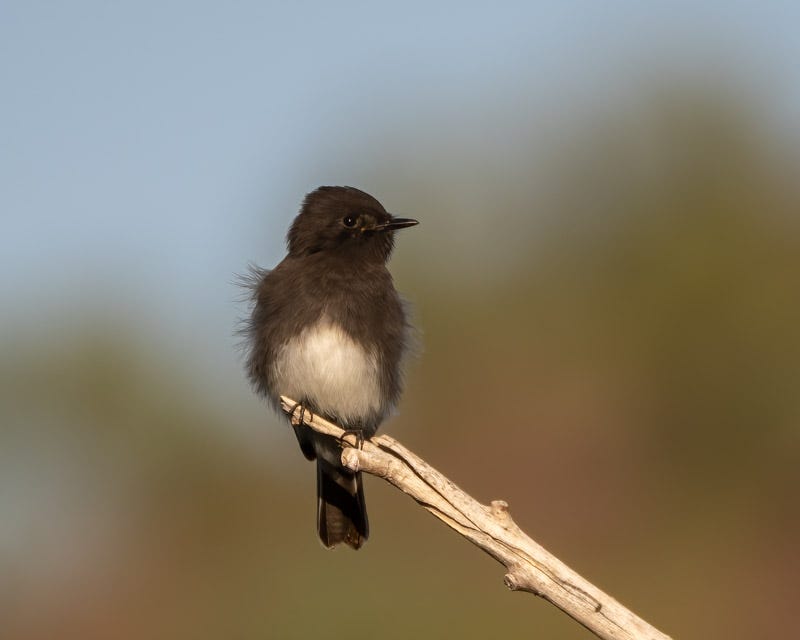

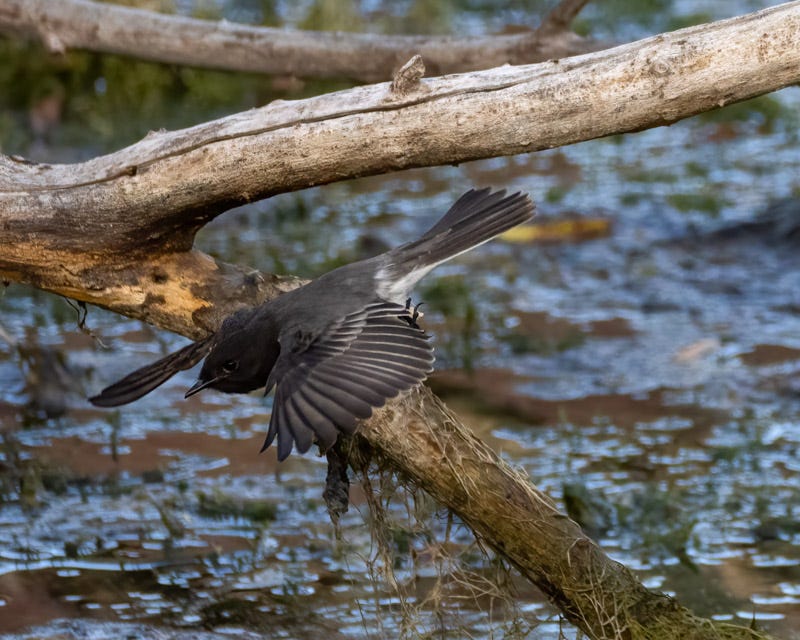
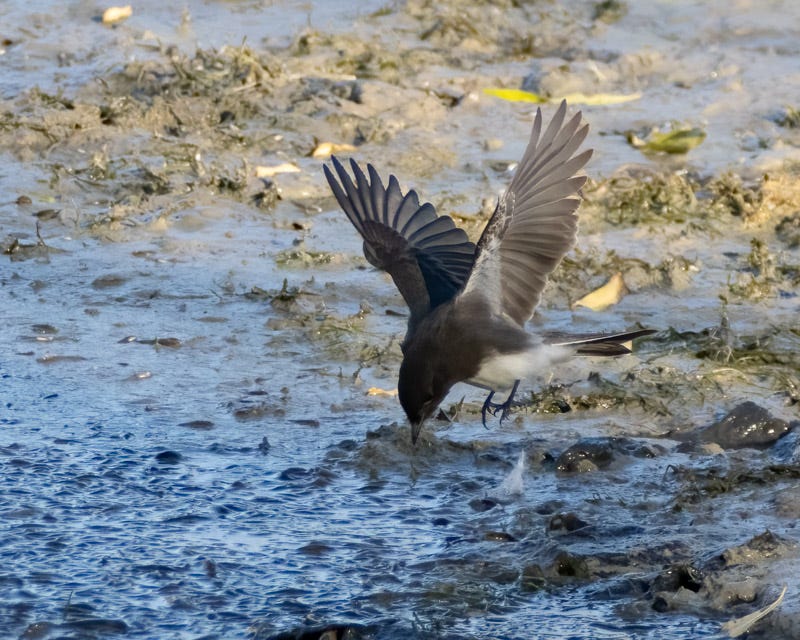
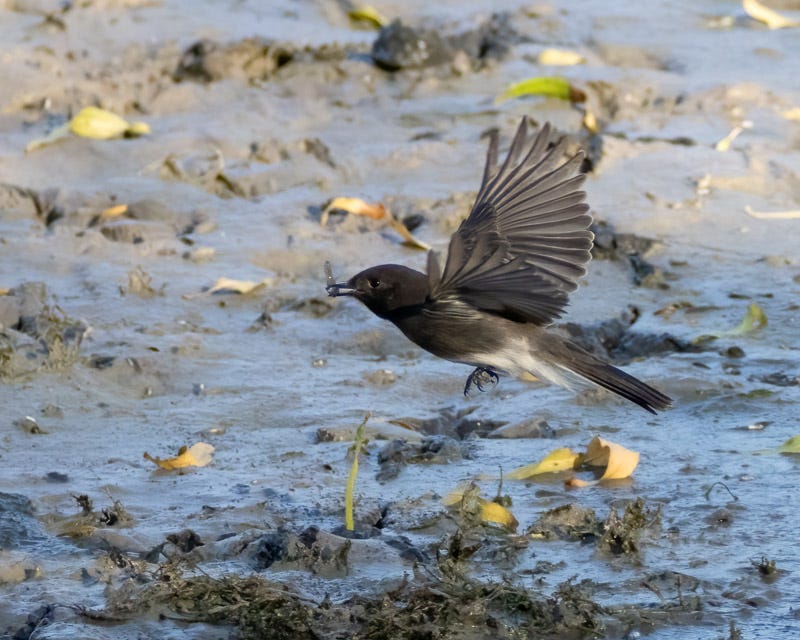

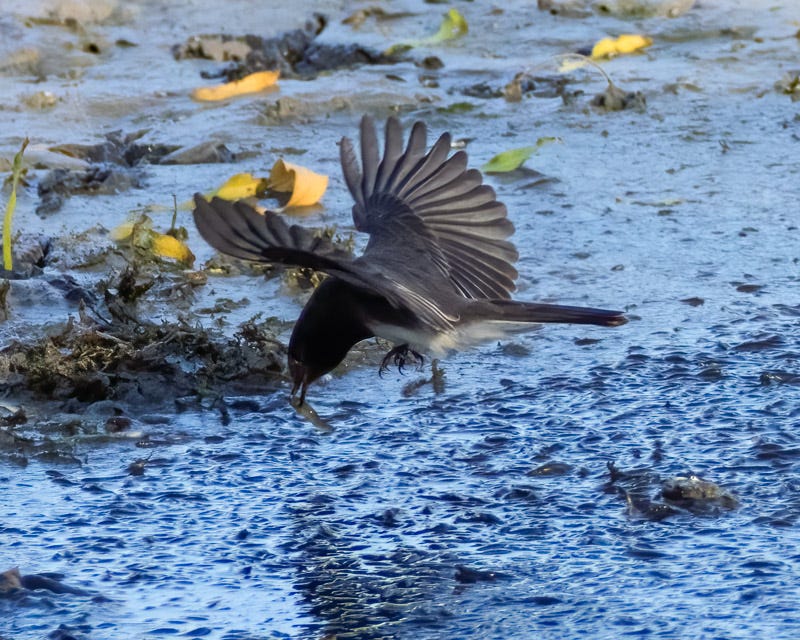
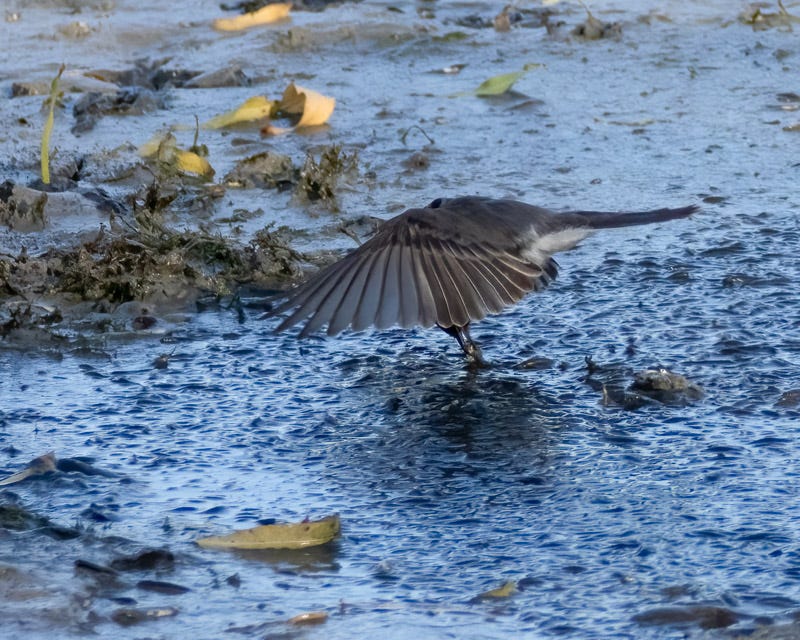
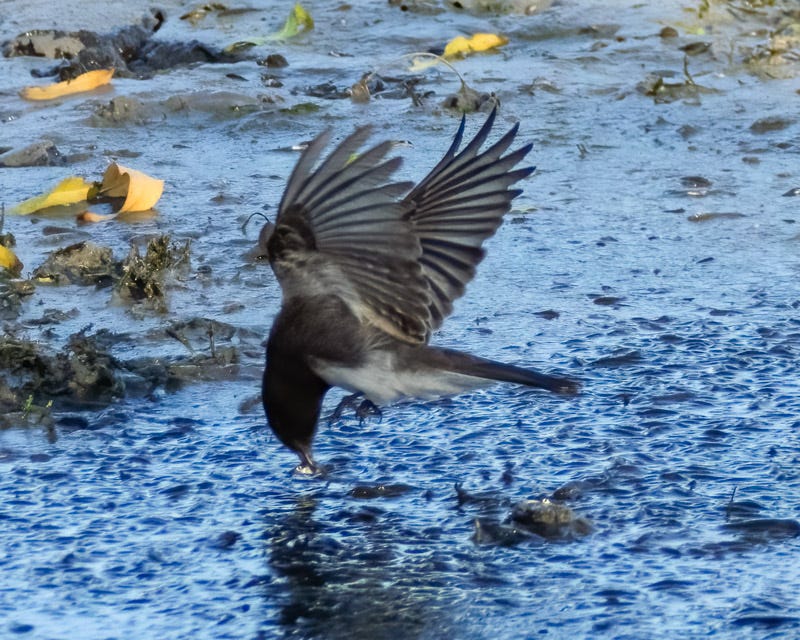

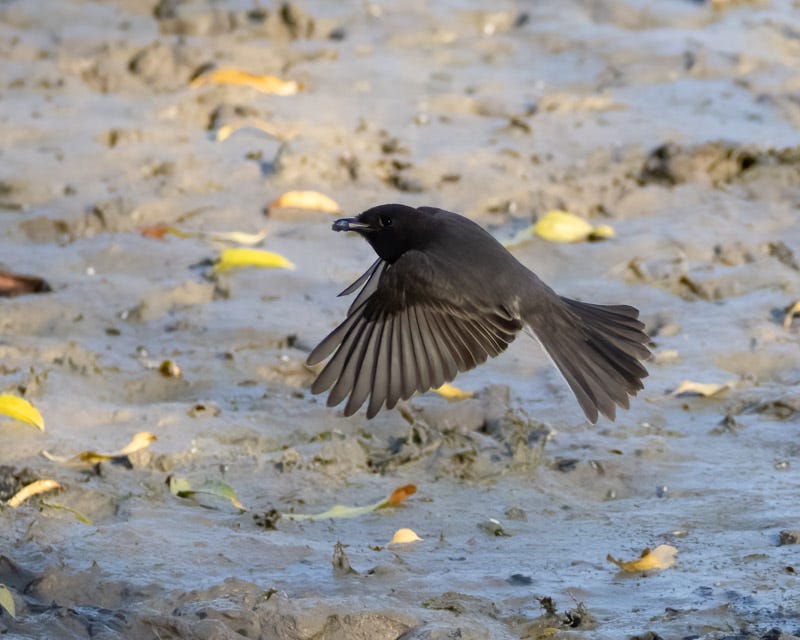

Quite the catch (by the bird, but especially by the photographer).
Fascinating data on these birds! Photography is the stunning ! Many thanks Jeffrey